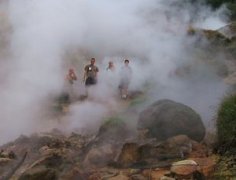Use vibrating screen to select coffee beans and peanuts
I saw on the Internet yesterday that someone asked if the vibrating screen could screen peanuts and coffee beans, and the answer was yes. In the following, some problems and solutions of vibrating screen in screening these two materials are discussed.
First of all, customers need to know the number of peanuts and coffee beans, and then choose the appropriate sieve, which is like screening peanut and coffee beans.
Secondly, it depends on the output of the customer to decide which type of machine to choose, such as rotary vibrating screen or linear vibrating screen and other screening equipment. All kinds of equipment have their own advantages. In the case of large handling capacity, the linear vibrating screen can be selected. Take the linear vibrating screen for example, the linear vibrating screen uses two special vibrating motors as the exciting source, so that the material is thrown on the screen surface and moves forward in a straight line at the same time. The material smaller than the sieve hole goes through the sieve hole and falls to the lower layer through the sieve hole, and after continuous jumping, it flows out through the outlet to complete the material classification operation. And can be stacked multi-layer screen, can screen a number of grades. For example, if the first layer is used to remove the large sundries in peanuts, peanuts fall to the second layer through the screen, and the peanuts larger than the second layer can run continuously to the outlet along the vibration force of the screen, and screen out the required level. impurity powder less than the number of mesh can be discharged in the third layer.
By the same token, the same applies to screening coffee beans. And compared with other screens, SZZ series linear vibrating screen has the advantages of high screening accuracy, simple structure, convenient maintenance, low energy consumption, low noise, good sealing, favorable environmental protection, replaceable many kinds of screen, long service life and so on.
Important Notice :
前街咖啡 FrontStreet Coffee has moved to new addredd:
FrontStreet Coffee Address: 315,Donghua East Road,GuangZhou
Tel:020 38364473
- Prev

How to judge whether the raw coffee beans are fresh or not
From the fruit state of coffee beans when they are picked from the tree to the state of raw beans that can be baked, the moisture content of coffee beans will be controlled between 9% and 13%, and it is not easy to bake if the water content is too high or too low. Generally, we get newly collected raw beans with water washing treatment, the moisture content is usually about 11.5% to 12.5%, half-washed Mantenin may reach 13%, and half-washed Brazil is 11% ~ 12% per day.
- Next

Salvadoran Coffee: hot Spring Water for processing Coffee Raw beans
Salvadoran coffee ranks side by side with Mexico and Guatemala as the producers of Asa and Merdo, and is fighting for the top one or two places in China and the United States with other countries. The highlands of origin are large coffee beans of all sizes, which are fragrant and mild in taste. Like Guatemala and Costa Rica, coffee in El Salvador is graded according to altitude, and the higher the altitude, the better the coffee
Related
- Guji coffee producing area of Guji, Ethiopia: Humbela, Shakiso, Wulaga
- What is the most expensive variety of Qiloso in BOP multi-variety group?
- How to store the coffee beans bought home?
- Why are Yemeni coffee beans so rare now?
- Ethiopian Sidamo all Red Fruit Sun Sun Santa Vini Coffee beans
- SOE is mostly sour? What does it mean? Is it a single bean? what's the difference between it and Italian blending?
- Is Italian coffee beans suitable for making hand-brewed coffee?
- How to choose coffee beans when making cold coffee? What kind of coffee beans are suitable for making cold coffee?
- Just entered the pit to make coffee, what kind of coffee beans should be chosen?
- Can only Japan buy real Blue Mountain Coffee? What are authentic Jamaican Blue Mountain coffee beans?

